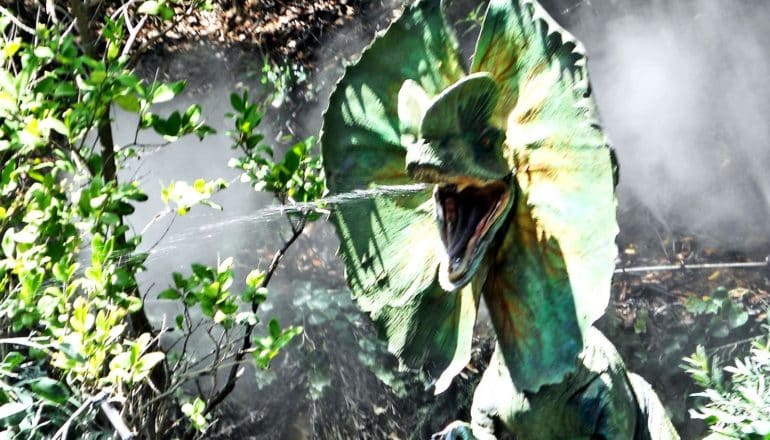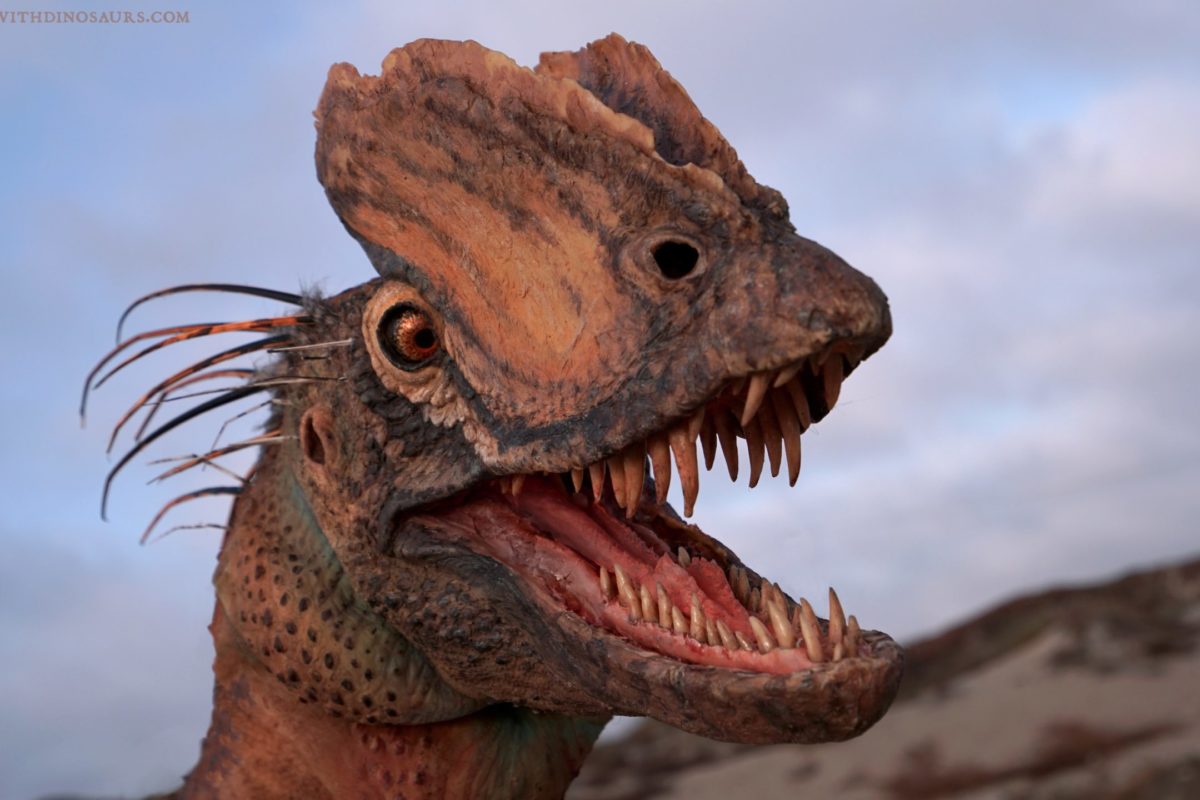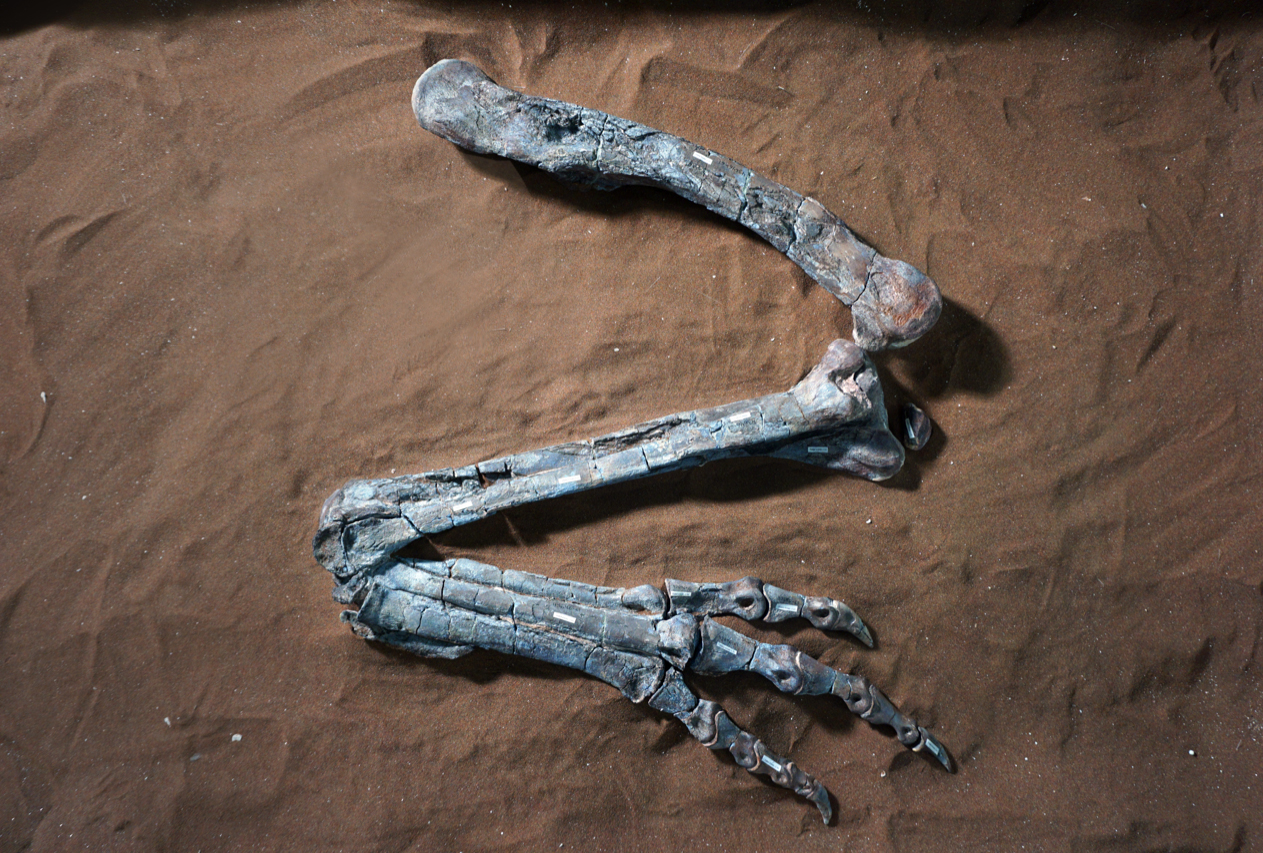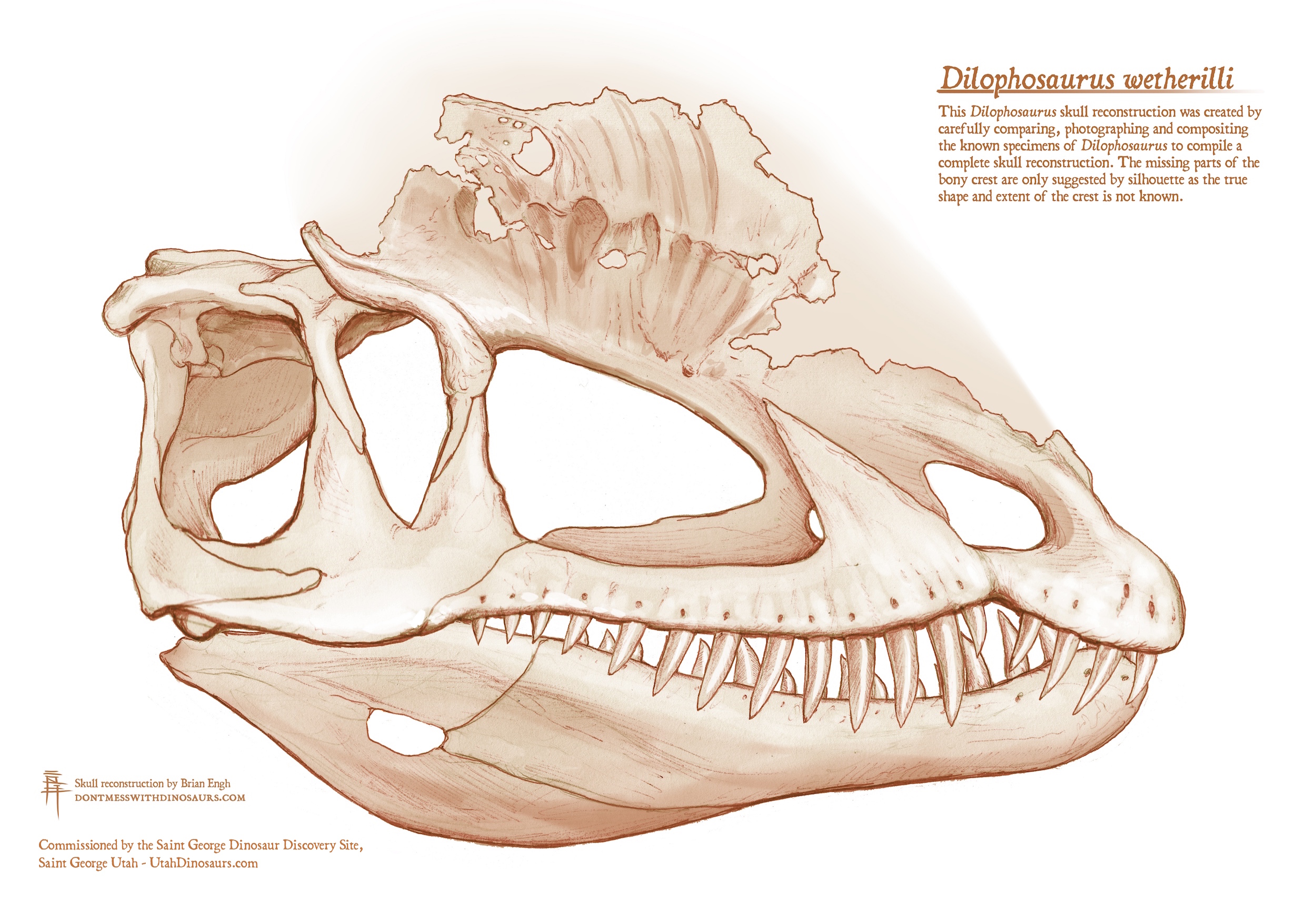Venom-spitting dinosaur wasn’t actually like ‘Jurassic Park’

Though you may know the Dilophosaurus as the small, frilled, acid-spitting beast from Jurassic Park, a new comprehensive fossil analysis sets the record straight.
Far from the small lizard-like dinosaur in the movies, the actual Dilophosaurus was the largest land animal of its time, reaching up to 20 feet in length, and it had much in common with modern birds.
Dilophosaurus lived 183 million years ago during the Early Jurassic. Despite big-screen fame, scientists knew surprisingly little about how the dinosaur looked or fit into the family tree, until now.

“It’s pretty much the best, worst-known dinosaur,” says lead author Adam Marsh, who conducted the research while earning his PhD from The University of Texas at Austin’s Jackson School of Geosciences. He is now the lead paleontologist at Petrified Forest National Park.
“Until this study, nobody knew what Dilophosaurus looked like or how it evolved.”
Seeking answers to these questions, Marsh conducted an analysis of the five most-complete Dilophosaurus specimens.

The study adds clarity to a muddled research record that reaches back to the first Dilophosaurus fossil to be discovered, the specimen that set the standard for all following Dilophosaurus discoveries.
That fossil was rebuilt with plaster, but the 1954 paper describing the find isn’t clear about what was reconstructed—a fact that makes it difficult to determine how much of the early work was based on the actual fossil record, Marsh says.

Early descriptions characterize the dinosaur as having a fragile crest and weak jaws, a description that influenced the depiction of Dilophosaurus in the Jurassic Park book and movie as a svelte dinosaur that subdued its prey with venom.
But Marsh found the opposite. The jawbones show signs of serving as scaffolding for powerful muscles. He also found that some bones were mottled with air pockets, which would have helped reinforce the skeleton, including its dual crest.
“They’re kind of like bubble wrap—the bone is protected and strengthened,” Marsh says.

These air sacs are not unique to Dilophosaurus. Modern birds and the world’s most massive dinosaurs also have bones filled with air. In both cases, the air sacs lighten the load, which helped big dinosaurs manage their bulky bodies and birds take to the skies.
Many birds use the air sacs to perform other functions, from inflating stretchy areas of skin during mating rituals, to creating booming calls and dispersing heat. The intricate array of air pockets and ducts that extend from Dilophosaurus’ sinus cavity into its crests means that the dinosaur may have been able to perform similar feats with its headgear.
All the specimens Marsh examined came from the Kayenta Formation in Arizona and belong to the Navajo Nation. The University of California Museum of Paleontology holds in trust three of the specimens. The Jackson School Museum of Earth History holds the two that coauthor Timothy Rowe, a professor in the Jackson School, discovered.
“One of the most important responsibilities of our museum is curation,” says Matthew Brown, director of the Vertebrate Paleontology Collections. “We are very excited to help share these iconic Navajo Nation fossils with the world through research and educational outreach, as well as preserve them for future generations.”
To learn more about how the fossils compared with one another, Marsh recorded hundreds of anatomical characteristics of each fossil. He then used an algorithm to see how the specimens compared with the first fossil—which confirmed that they were indeed all Dilophosaurus.
The algorithm also revealed that there’s a significant evolutionary gap between Dilophosaurus and its closest dinosaur relatives, which indicates there are probably many other relatives yet to be discovered.
The revised Dilophosaurus record will help paleontologists better identify specimens going forward. Marsh says that the research is already being put into action. In the midst of his analysis, he discovered that a small braincase in the Jackson School’s collections belonged to a Dilophosaurus.
“We realized that it wasn’t a new type of dinosaur, but a juvenile Dilophosaurus, which is really cool,” Marsh says.
The researchers conducted field work on the Navajo Nation under a permit from the Navajo Nation Minerals Department. Any persons wishing to conduct geological investigations on the Navajo Nation must first apply for and receive a permit from the Navajo Nation Minerals Department.
The analysis appears in the Journal of Paleontology. Funding for the research came from the National Science Foundation, the Jackson School, and the University of California Museum of Paleontology.
Source: UT Austin
The post Venom-spitting dinosaur wasn’t actually like ‘Jurassic Park’ appeared first on Futurity.
Contributer : Futurity https://ift.tt/2VXFgww
















No comments:
Post a Comment